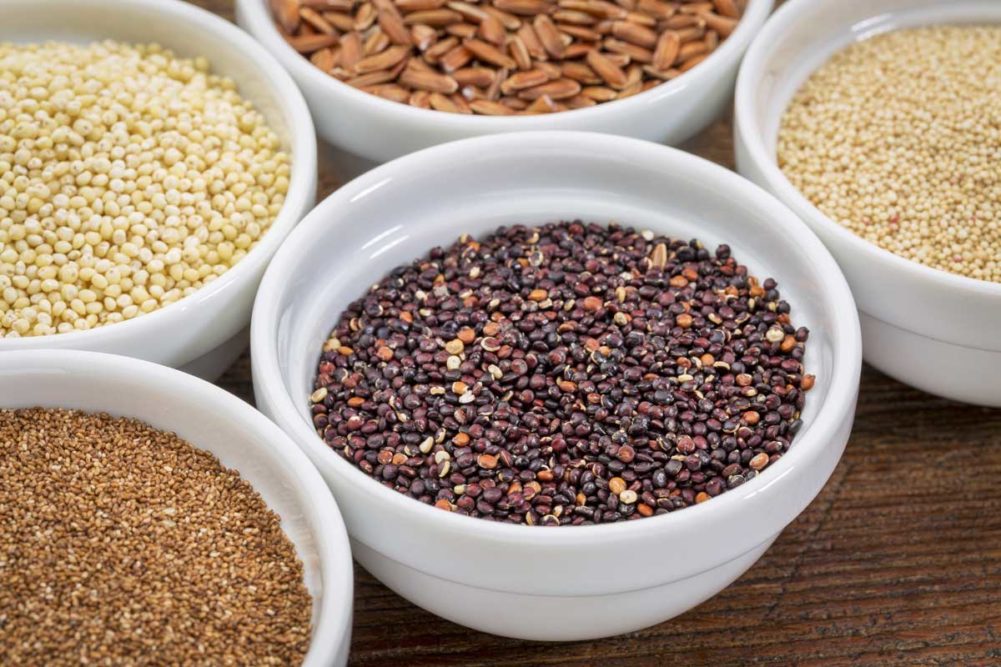As consumers become more educated about the different types of whole grains, more grains have become available to bakers beyond conventional wheat, barley and millet. People have come to accept quinoa, sorghum, kamut, teff — even hemp — and many more in their baked goods. While consumers may be more educated and aware of these ingredients, the supply chain has also stepped up to improve availability.
“Traditional whole grains like whole wheat flour and barley pieces have been more common because of the cost and availability of those ingredients,” said Tess Brensing, R&D and technical product manager, ADM. “There’s much more variety in grains that are readily available in the market today.”
This diversification of grains has allowed bakers to get creative when it comes to the flavor, texture and nutrition they are able to offer through breads, rolls, bars and sweet goods.
“Rather than simply substituting refined grains with whole grains, formulators are leveraging the unique characteristics of whole grain ingredients to bring out robust flavors and create visually appealing end products,” said Weston Heide, vice president, trade group, The Andersons, Inc. “Whole grains have a wide range of natural flavors, textures and nutrition profiles, which can be highlighted rather than hidden.”
Bakers can either highlight the unique flavors of certain grains or they can blend grains to make something completely different.
“Consider pairing grains with strong complementary flavors to create new flavor profiles like quinoa, which has green and grassy notes, and amaranth, which has earthy notes,” said Ed Reinwald, certified master baker and Ardent Mills technical solutions analyst.
Blending can also help round out the strong flavors of certain grains and make them more palatable. For example, quinoa and amaranth have robust nutty flavors that might be desirable for a certain application while millet and sorghum impart a milder flavor. Teff features a sweeter flavor profile. Rye adds a lot of flavor to baked foods but, as Joni Huffman, senior vice president of sales and marketing, Healthy Food Ingredients (HFI), put it, a little goes a long way. These can be blended with other grains to either highlight their flavors or mellow them out, depending on the final goal and target consumer.
“It’s important to evaluate how the flavors and textures of grain blends taste as well as how they appear from a visual perspective,” Ms. Huffman said.
Different formats of these grains can also add texture to a finished product. While whole grain flours made from whole wheat or ancient grains can provide a base for a formulation, whole grains, seeds, flakes or berries can also add texture to the crumb or the finishing of the product, adding visual interest as well as mouthfeel.
“The incorporation of whole grains, seeds, nuts and legumes into products like tortilla chips and crackers can turn a traditional carrier into a main snacking occasion by providing enhanced texture and nutrition,” said Nicholas Ahrens, senior product applications technologist, Bay State Milling Co.
Honeyville, Inc.’s mill offers a wide range of ingredient formats for whole grains, whether it’s milled into a flour, cracked, flaked or blended with other whole grains.
“Some people want to add a little bit of texture or color, so we can take a hard red wheat and add a soft white wheat or hard white wheat or maybe a rye grain and add some color to it,” explained John Hadfield, vice president of sales, Honeyville.
The draw of whole grains remains their nutritional impact, and as the industry’s understanding of whole grains has deepened, the nutritional benefits take center stage.
“We know that consumers are looking for more meaningful nutrition from the foods they’re eating, and some of the cues that they look for are ingredients that are simple, recognizable and minimally processed,” said Paula LaBine, marketing director, milling and starch and baking category lead, ADM. “Of course, whole grains really fit the bill here.”
The nutritional profile of whole grains is well-documented. These grains contain dietary fiber and protein. They also contain the B vitamins, thiamin, riboflavin, niacin and folate as well as minerals such as iron, magnesium and selenium. Scientific studies link these ingredients to reduced risk of stroke, Type 2 diabetes and heart disease as well as better weight management, less inflammation and a lower risk of colorectal cancer.
The diversity of available whole grains enables bakers to also diversify the nutritional profile or increase the quantity or quality of the protein or fiber available in the baked food.
“Bakers view gluten protein for its functionality in baking; however, there is an opportunity to improve protein quality when wheat is combined with other whole grains such as oats, quinoa, millet, rice, sorghum, buckwheat, amaranth and more as an avenue to achieve protein claims,” Mr. Ahrens said.
Whole grains can offer bakers a way to increase their protein content without having to add sources that may be concentrated or less label friendly. Choosing conventional grains with higher protein content or blending them with other high-protein grains can get those desired numbers.
“For example, gluten-free whole grain baked goods formulated with the hull-less, high-protein variety of oats SowNaked oats can contribute significantly more crude protein than using traditional gluten-free oats,” Mr. Ahrens explained.
This article is an excerpt from the May 2020 issue of Baking & Snack. To read the entire feature on whole grains, click here.





